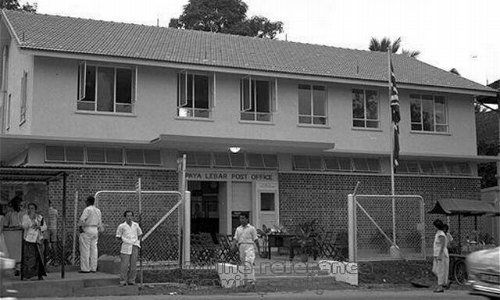At Singapore’s main post office, visitors can now buy sneakers, tarry over a kopi, or climb the city-state's largest bouldering gym. Does the same fate await bank branches?
When SingPost opened its refurbished Paya Lebar post office last year, the modest, two-story pre-fabricated build from long ago (pictured below; image courtesy of Singapore's Heritage Board) had been transformed into a modern steel and glass-encased shopping center and museum.

Visitors can browse, shop, eat, and be entertained in a five-story mall with vendors including Skechers, Swensens and Owndays (see below). A collection of old stamps remains as well as a colonial-era red pillar posting box (mail dropped into it is postmarked with a special date stamp in red ink).

Machines Outnumber Staff
Visitors looking for more traditional postage services like weighing mail and buying postage, transferring remittances, or dropping off registered mail will find various machines to serve them throughout the day. For special postal requests, customers can still get help from two or three postal workers – during office hours.
Banks are a similar case study: e-wallets are skyrocketing as cash and checques wane, and Chinese tech giants AliPay and WeChat Pay are so popular for payments that officials fret they are a systemic risk. Are bank branches doomed to becoming museum relics?
Going the Way of Stamps?

The signs are grim: Cash withdrawals at automated teller machines dropped to 40 percent of e-payment transcation value last year, according to the Monetary Authority of Singapore. Ong Ye Kung of the Monetary Authority of Singapore, or MAS, said last month he wants to reduce that number to 20 percent by 2020.
«We don't need to be literally a cashless society – some people will always find cash useful – but we certainly can transact with a lot less cash and we won't need to visit the ATM so often,» he said.
Show Me The Digits
More than 80 percent of Singapore consumers have adopted e-payments instead, and almost 60 percent of merchants accept e-payments. Singapore plans to follow Sweden in stopping the use of cheques altogether by 2025, Ong noted.
- Page 1 of 4
- Next >>



















